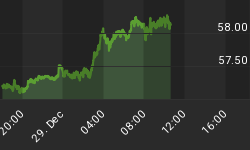Here is an extract from commentary posted at www.speculative-investor.com on 18th September 2003:
The performance of the NASDAQ100 Index (NDX) relative to the performance of the Dow Industrials Index is a measure of the willingness of market participants to take on risk. This is because the stocks that populate the NDX are generally considered to have higher growth and higher risk profiles than the stocks that populate the Dow, so during those periods when investors are becoming less risk averse (when they are becoming more concerned about capturing potential upside than avoiding potential downside) the NDX trends higher relative to the Dow. Conversely, when investors start to become more concerned about downside risk than upside potential the NDX begins to under-perform the Dow.
The reason it is important to understand whether investors are becoming more or less risk averse is that changes in the level of risk aversion often trump valuation over the short and even the medium term. For example, as long as investors are prepared to take on more risk then an extremely over-valued market can continue to move higher. Similarly, an extremely under-valued market can continue to move lower as long as the level of fear continues to increase. Value always wins out in the end, but sometimes only after a large and lengthy divergence.
Further to the above, weve focused on the NDX/Dow ratio because it provides a simple and effective way to monitor the general level of risk aversion in the market. We expect a major decline to get underway at some point over the next few months and for the stock indices to drop below their October-2002 lows during 2004. However, although there is enormous valuation risk in the market there isn't much chance of such a decline commencing while the NDX/Dow ratio is still trending higher.
The most likely outcome is that the NDX/Dow ratio will turn lower prior to the final peak in the Dow Industrials Index. Given that the ratio made a new high earlier this week (see chart below) a major decline is probably NOT about to commence. As discussed in previous commentaries, this has important (bullish) implications for gold stocks.

The NDX/Dow ratio isn't the only indicator of the general level of risk aversion in the markets. Another indicator worth monitoring is the behaviour of credit spreads (credit spreads are the differences between the yields on different debt securities). For example, when credit spreads are contracting it means that yields on higher-risk debt securities are falling relative to the yields on lower-risk debt securities. And this, in turn, indicates that investors are becoming less risk averse. In such an environment corporate debt will tend to perform better than US Treasury debt, junk bonds will generally out-perform AAA-rated corporate bonds, and the debt of emerging-market countries will fall into favour.
Credit spreads have generally trended lower over the past 12 months and have thus behaved consistently with the NDX/Dow ratio. Furthermore, if the following extract from Doug Noland's latest Credit Bubble Bulletin at www.prudentbear.com is anything to go by then there is not yet any sign of the current trend letting up.
'September 11 - Dow Jones (Sonja Ryst): 'As hungry buyers continue bidding up the prices on government and corporate debt from emerging markets, three big-name issuers came to market on Thursday, kicking off what's expected to be a busy few weeks of issuance...'The markets are poised to have issuance from everywhere in the next couple weeks,' said Mike Conelius, a portfolio manager at T. Rowe Price...J.P. Morgan said in a recent report that $11 billion in emerging market debt issuance remains to be completed this year and that $32 billion had been placed so far... Debtors haven't been able to raise international bond funding at such low cost in years. The J.P. Morgan Emerging Markets Bond Index Plus, or EMBI+, is trading at around 475 basis points over comparable U.S. Treasurys. The last time the EMBI+ went below 480 basis points was on May 5, 1998.'(Emphasis added)
It is worth noting, though, that once the trend does change things will probably unravel very quickly. This, in turn, makes the current market environment very challenging for anyone who understands the risks. Those who don't understand the risks can, of course, just remain calmly 'long' until the whole thing comes crashing down around them.
















